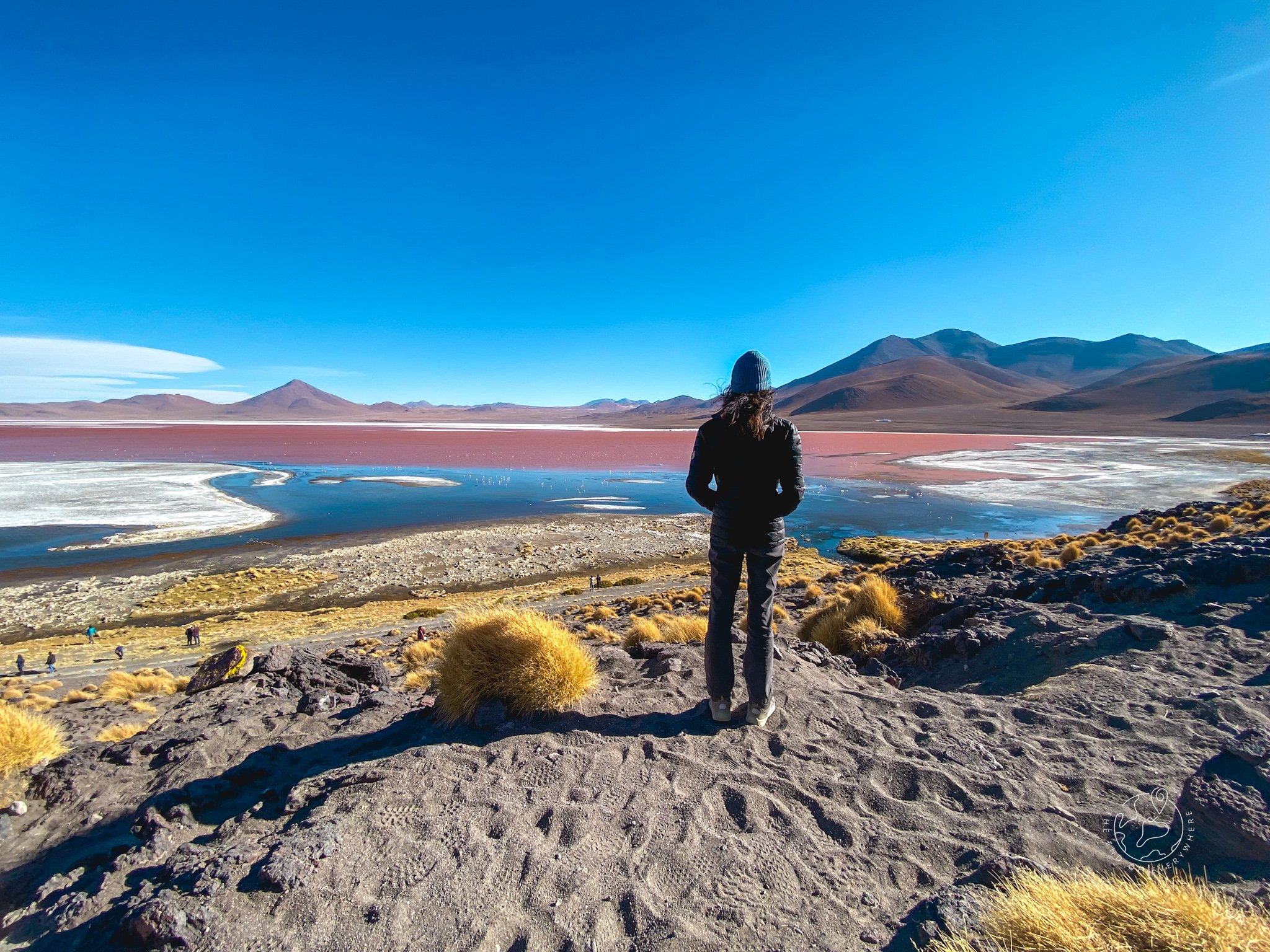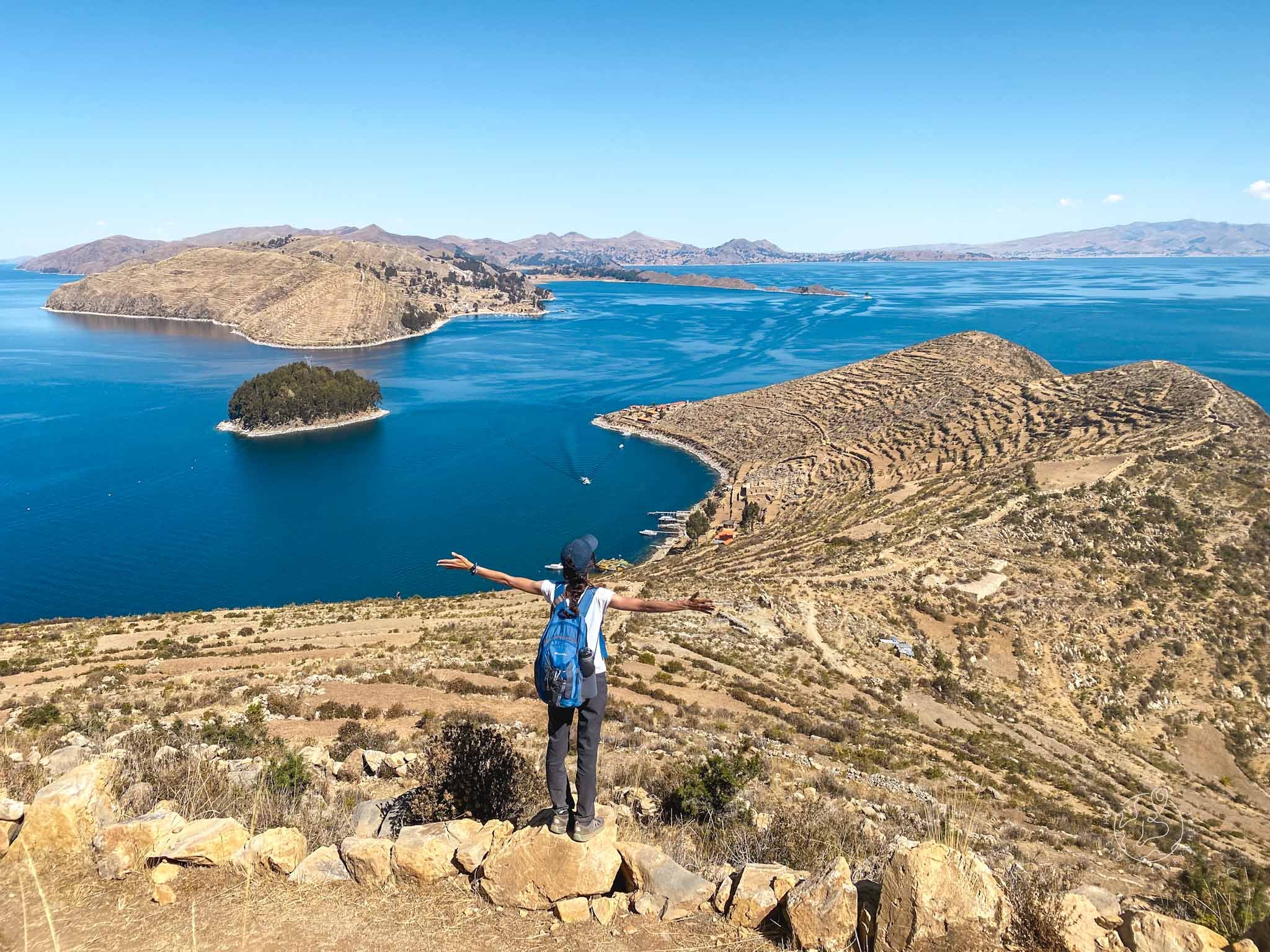Salt of the Earth
Playing with perspective on Bolivia’s Salt Flats
Travelling through Bolivia, it seems all roads lead to Uyuni. Everyone we met, everyone we asked for advice on where to go - backpackers and locals - pointed us south.
So it was with some anticipation that we boarded a morning bus from Sucre towards the gateway to the famous Salar de Uyuni: the Bolivian Salt Flats. Whilst the vast and sparse landscape of the salty desert was an incredible thing to experience, it was day 2 of our tour that really blew us away, as we discovered the raw and wild beauty of Bolivia’s South West circuit.
At around 10,000sq km in area - a figure that changes as the natural landscape expands and shrinks - the Salt Flats are not only the poster-child for Bolivian tourism, but they also hold an important and controversial key to the country’s economy: around 60% of the world’s known lithium reserves lie beneath the bright white surface.
Of course, the famous Salar de Uyuni was firmly on our list of places we wanted to visit but, as always, we wanted to do something a little different. After a little research, we opted for a highly-rated 3 day experience that included the chance to ride bikes across the Salt Flats. Discovering this otherworldly landscape on two wheels? That felt like a real adventure!
The Train Graveyard & Salt Factories
Our first stop was the Train Graveyard - an area filled with abandoned trains. But why are they abandoned? Building a railway line through silver mining towns like Uyuni and Potosi was highly controversial with the local populations and neighbouring countries. It took years to lay the rails, hampered by attacks and vandalism by locals which put the lives of repair engineers at risk. It cost so much to convince specialist engineers to come out for repairs that it eventually became more cost effective to import new trains instead of fixing damaged ones. Eventually, the project was abandoned - explaining why there are over 100 trains in the area.
Sprawled across an otherwise desolate landscape, the trains - corroded by the salt-laden wind over the years - made for an eerie scene to start the day.
Soon after, we visited Salt Factories to learn how the ground beneath our feet was converted into all sorts of products. We saw a huge number of salt bricks, which are used in the constructions of buildings in the area (including the hotel we stayed in on night 2!) and, of course, good old fashioned table salt.
Gaining Perspective
A surreal experience riding across the Salt Flats on our bikes!
Next up was our chance to ride across the salt flats on bikes. We loved this part of the day! Our group was driven to a completely empty area of the flats where bikes were waiting for us, and we were given no instructions other than a small dot on the horizon - a marker to head towards.
The ride was an amazing experience! I expected the ground to be soft, but it really wasn’t - the hard crust of the surface was changing as we rode along, sometimes flat, sometimes deep grooves, hexagonal tiles, holes appearing from nowhere. It was quite difficult riding! But it was also incredible. The landscape is truly unreal, a hazy horizon and the same scene on all sides… it’s like you’re cycling through the sky, clouds beneath your wheels and nothing else.
After lunch it was time for a but of fun… because did you even go to the Salt Flats if you didn’t play with perspective in photos?!
Perspective pictures on the famous Salar de Uyuni in Bolivia are created because the vast, flat, and reflective surface makes it challenging to judge depth and distance. This makes it appear as though objects in the distance are much closer than they actually are… so the possibilities of optical illusion are endless.
I have to admit, getting the effect right is much harder than it seems. We had all sorts of crazy ideas but executing them was another matter entirely. It involves lying on the hard, crusty ground and creeping millimetres left, right, forwards, backwards, until you are in the perfect position. As always, getting the perfect shot for the ‘gram is hard work!
A Sacred Island
Our last stop for the day was the sacred Incawasi island - it was one of our favourite stops on the salt flats area of the tour.
This rocky ‘island’ emerges from the white expanse of the landscape and is crowned by a unique species of cacti - some of which are hundreds of years old. The island was once land in a huge prehistoric lake, evidenced by the fossilised coral that can still be found on its paths. For Incas, the island was a refuge when crossing the Salt Flats, and was a sacred place where religious ceremonies were held.
We followed a winding path up the island, through the huge cactus trees to a viewpoint over the Salt Flats. In front of us, the sky was turning pale blue and pink. Behind us, the moon was already rising in the sky. All around, the White Sea of hexagonal salt tiles seemed to glow.
From White to Red
Waking up on day 2, our whole group realised we didn’t quite know what to expect from the day. We had all been looking forward to a Salt Flats tour… but we had seen the Salt Flats and still had a full day ahead of us.
It’s safe to say we were all blown away by the beauty of the Bolivian landscapes that day. From the dazzling white of the previous day, the landscapes turned all sorts of bright and beautiful colours, but mostly red from the mineral-rich ground that lines the Bolivia-Chile border. Whilst the Chilean side is covered by the Atacama Desert - one of the driest places in the world - the Bolivian side experiences monthly rainfall.
Driving through the barren landscape, we were treated to a rare sighting of a single carriage train chugging along the tracks before we arrived at a viewpoint of the impressive Ollague volcano, which marks the border between Bolivia and Chile. The top was releasing a steady flow of steam and gas, making a picture perfect scene.
We will also remember this stop as the place we tried Llama meat! Graeme couldn’t miss the chance to try a llama sausage sandwich and, I have to admit, it was quite a tasty, chorizo-like flavour. Not a bad breakfast!
The Three Lagoons
We moved on to a series of lakes, each more impressive than the last and all home to several species of flamingo. Laguna Canapa was a dark blue, whereas the second stop at Laguna Hediona was an icy colour. Both were filled with James and Andean flamingos that come to breed in the saline waters and adding even more colour to the landscape.
The stop at Laguna Hediona was particularly special, as we enjoyed our lunch overlooking the wild flamingos.
The third stop was maybe the most breath-taking, as we came to the surreal beauty of Laguna Colorada. This vibrant red lagoon, also home to flocks of flamingos, was flanked by a dramatic volcanic landscape. The bright crimson colour of the lake is from minerals and algae which reflect the sunlight. The mind-blowing fact is that it only looks red between the hours of 11am and 5pm… nature is truly an incredible work of art!
Our final stop of the day was at the Fumaroles of Sol de Mañana - a geothermal area, often mistaken for Geysers. Fumaroles are openings in the Earth's crust that emit steam and gas, including sulphur - yep, the area smelt pretty strongly of the stuff!
The fumaroles are a result of the geothermal energy trapped beneath the Earth's surface.
Alongside the fumaroles there were also boiling mud pools created by the superheated water and steam emerging from underground reservoirs.
Whilst it is amazing to see, it’s also potentially very dangerous - we heard an absolute horror story from our guides about a tourist who got too close… so we were suitably wary and kept our distance whilst admiring the area!
In Hot Water… Under the Full Moon
After a long day of exploring the incredible landscapes, perhaps the best moment was dipping into the naturally hot waters of the Polques Hot Springs. The waters are rich in minerals which is said to relieve all manner of ailments.
Under the bright light of the full moon, we bought some beers and braved running through the cold night in our swimming costumes for this heavenly way to wind-down. It was a truly magical experience.
Related Content





















